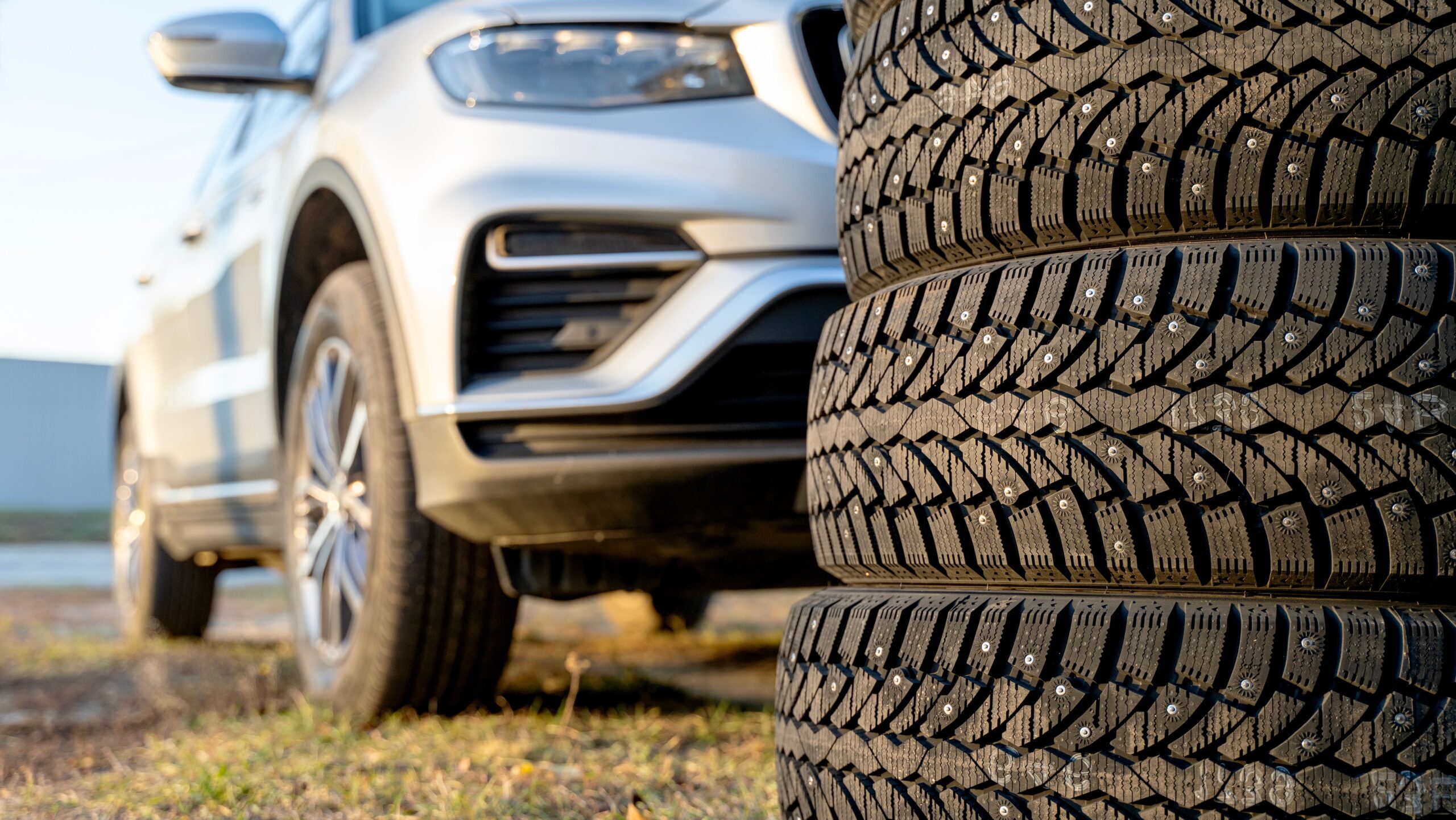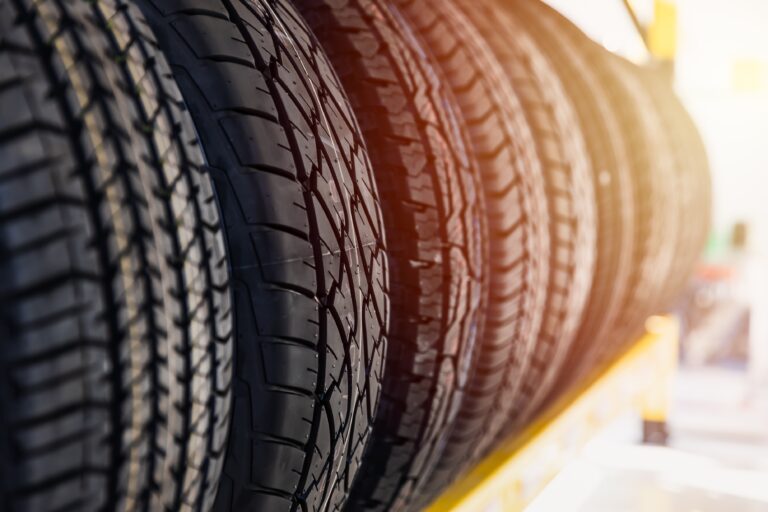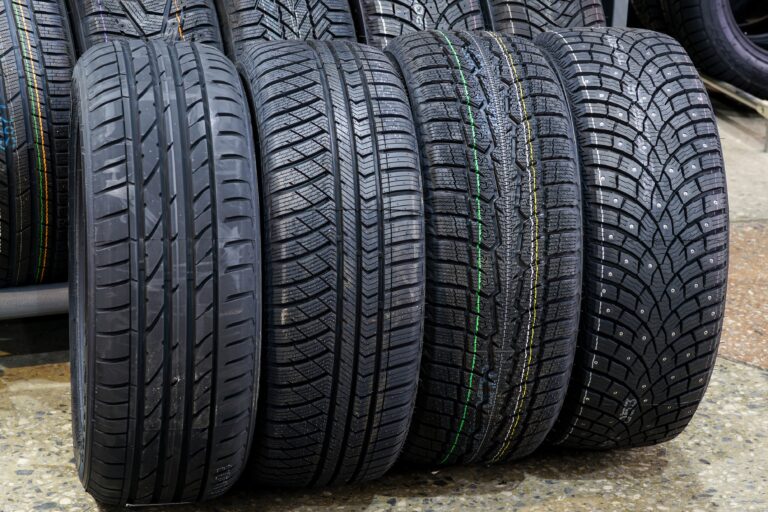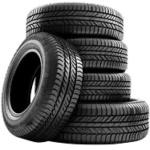When Should You Switch to Winter Tires?

As the days grow shorter and temperatures start to drop, your vehicle’s tires become even more critical in keeping you safe on the road. Seasonal tire changes are an excellent way to ensure your vehicle maintains optimal grip, braking performance, and control as the weather conditions change.
If you’ve ever wondered when to switch to winter tires or why it really matters, this guide will help break it all down for you. We’ll explain how temperature affects tire performance, when to make a tire change, and how Telle Tire’s winterization services can help you prepare for a safer driving season.
Why Winter Tires Matter for Your Safety
Switching to dedicated winter tires is one of the simplest and most effective ways to protect yourself and your vehicle when cold weather arrives. Even before the first snowflake falls, dropping temperatures can change how your tires perform, and it’s not to your advantage.
Designed for Cold Temperatures
Winter tires are specifically engineered with special rubber compounds that stay flexible, even when temperatures drop below 45°F. This flexibility and softness allow them to maintain better connection and grip on the road.
All-season tires harden in the cold, reducing traction and increasing braking distances. That stiffness can make it harder to steer and stop, especially when frost or black ice covers the roadways.
Enhanced Grip & Tread Design
Winter tires feature deeper tread patterns and additional biting edges, known as sipes. These design elements help effectively channel snow, slush, and water away from your tires, improving traction and stability.
Studies have shown that winter tires can shorten braking distances by up to 34% on icy roads compared to all-season options. They also assist in maneuvering through tight turns at slightly higher speeds than vehicles equipped with all-season tires.
The Best Time to Switch to Winter Tires
So, when exactly should you schedule your tire change for winter? The best answer depends on temperature, local weather patterns, and your personal driving habits.
The 45-Degree Rule
A good rule of thumb is to install winter tires when daily temperatures consistently stay below 45°F (7°C). Even if the forecast doesn’t call for snow yet, cold pavement can still harden tire rubber and reduce traction. Switching early ensures your tires are ready before icy mornings become a regular occurrence.
Local Weather Patterns to Watch
In Missouri and throughout the Midwest, winter weather can be unpredictable. One day might be mild and sunny, and the next could bring freezing rain or snow flurries. That’s why paying attention to local weather patterns rather than just the calendar is crucial when deciding the right time to install winter tires.
According to the University of Missouri’s Frost/Freeze Guide, the average first frost in northern Missouri occurs in mid-October, while areas further south may not experience it until early November. However, cold snaps can arrive earlier than expected, especially in higher elevations or open rural areas.
Even if snowy or icy conditions aren’t in the forecast yet, once overnight lows start dipping into the 30s, road surfaces can become slick from frozen frost or dew. Bridges and shaded roads are often the first to freeze, creating hidden hazards for morning commuters.
By scheduling your winter tire installation before these patterns begin, you’ll ensure your tires are ready for sudden temperature swings and icy mornings, long before most drivers start booking their appointments.
Consider Your Driving Habits
While local temperatures are the most significant indicator, your personal driving routine also plays a major role in when to make the switch. A driver who spends most of their time on city streets has very different needs than someone who commutes before sunrise or regularly drives on highways or rural backroads.
If you’re an early-morning commuter, you’re likely to encounter colder pavement and frost before the sun warms the roads. The same applies to those living in rural or hilly areas, where roads can remain icy for longer due to limited sunlight and less frequent plowing. In these situations, it’s smart to install your winter tires a few weeks earlier than urban drivers might.
Drivers in very rural areas may want to go a step beyond standard winter tires. Specialized snow tires, or studded tires, offer extra grip for consistently icy conditions. However, studded tires should be used in areas of persistent ice or packed snow, as they will reduce traction on dry or wet roads. If using studded tires, please note that they are only legal in Missouri from November 1st to April 1st.
Frequent travelers, especially anyone driving across state lines into northern or higher-elevation regions, should also switch early. Even if your home area stays mild longer, destinations just a few hours away may experience freezing conditions much sooner.
On the other hand, if you mainly drive short distances in the afternoon and your vehicle stays parked indoors overnight, you may have a bit more flexibility. Still, waiting too long risks getting caught off guard by that first unexpected freeze or snowstorm.
Signs You Shouldn’t Wait Any Longer
Even if you’re keeping an eye on the temperature, there are a few unmistakable signs that it’s time to stop waiting and schedule your winter tire installation. Paying attention to these indicators can help you avoid dangerous driving conditions (and the seasonal rush at your local tire shop).
Morning Frost or Ice on Windshields
When you wake up to find a layer of frost or thin ice coating your windshield, it’s a clear sign that overnight temperatures have dropped below freezing. Those same conditions are affecting the roads, especially bridges, overpasses, and shaded stretches that retain cold longer.
If your mornings involve scraping frost, your tires are already being exposed to the kind of cold that causes all-season rubber to stiffen and lose traction. Even if the streets appear dry, black ice can form in these conditions and catch drivers off guard. Making the switch now ensures your tires can flex properly and maintain grip on cold pavement, keeping your vehicle stable during those chilly early commutes.
Weather Forecasts Predicting First Snow
Waiting until snow starts falling to change your tires is a mistake many drivers make, and ultimately regret. By the time the first winter storm hits, tire shops are often booked out days or even weeks in advance.
If meteorologists are mentioning “winter mix” or “flurries in the forecast,” it’s time to act. Don’t wait for accumulation, because once road temperatures drop, even a light dusting can create slick, dangerous surfaces. Scheduling your winter tire change early means you’ll be ready before the roads turn slippery.
Tires Are Wearing Out or Cracked
If your tires are already showing signs of wear, switching seasons is the perfect time to have them inspected. Look for visible cracking, uneven tread wear, or shallow tread depth (less than 4/32″) as these conditions are considered unsafe for winter driving.
Worn tires can’t channel water, slush, or snow as effectively, which increases your risk of hydroplaning and reduces braking performance. Even the best winter rubber won’t perform properly if the tread is too thin.
If you’re removing worn tires to install winter tires, knowing the condition of your all-season tires will help you prepare for the next seasonal swap. Telle’s tire installation services include professional inspections to help you determine whether a replacement is necessary for safe and confident driving, as well as when it’s time to have your winter tires installed.
Winter Tire FAQs
What temperature is too cold for all-season tires?
All-season tires begin to lose flexibility and traction once temperatures drop below 45°F (7°C). That’s when winter tires provide a noticeable performance and safety advantage.
Can I use winter tires all year?
While you can technically drive on winter tires year-round, it’s not recommended. The softer rubber wears out more quickly on warm pavement, reducing its lifespan and performance during the summer months.
Do I need winter tires if I have AWD?
All-wheel drive improves traction when accelerating, but it doesn’t help much with braking or cornering. Winter tires provide better grip on cold, slick roads, making them beneficial even for AWD vehicles.
Ready to Make the Switch? Visit Telle Tire Today
Don’t wait for freezing temperatures to catch you off guard. Take it to Telle and drive confidently all winter. Schedule your seasonal tire change with the trusted experts at Telle Tire. Our technicians can handle everything from installation and alignment to complete vehicle winterization.
Find a Telle Tire location near you and make your appointment today to stay safe and confident on winter roads.

Take it to telle
Stay Safe with a Tire Check from Telle Tire
Worried about your tread depth or tire condition heading into the summer storm season? Take it to Telle. Our expert technicians can assess your tires, check pressure levels, and recommend replacements when necessary, helping you stay in control regardless of the weather conditions. Stay safe, stay prepared, and if you’re unsure about your tires, schedule a visit with your nearest Telle Tire & Auto Centers location today.
Stay Informed
Recent Articles from Telle Tire

How to Get the Longest Life from Your Tires
Your tires are one of your vehicle’s most important investments and one of the easiest to protect. Proper tire maintenance saves you money by extending the…

Best Tires for Missouri Weather: All-Season vs Winter Tires
Missouri’s weather can surprise you. One week, you’re driving on a mild, sunny fall day, and the next, you’re navigating icy roads or puddles after a…

Do Electric Vehicles Need Special Tires?
Electric vehicles (EVs) have become a common sight on the road, offering drivers an eco-friendly, high-performance alternative to gas-powered cars. As more EV models become available…
